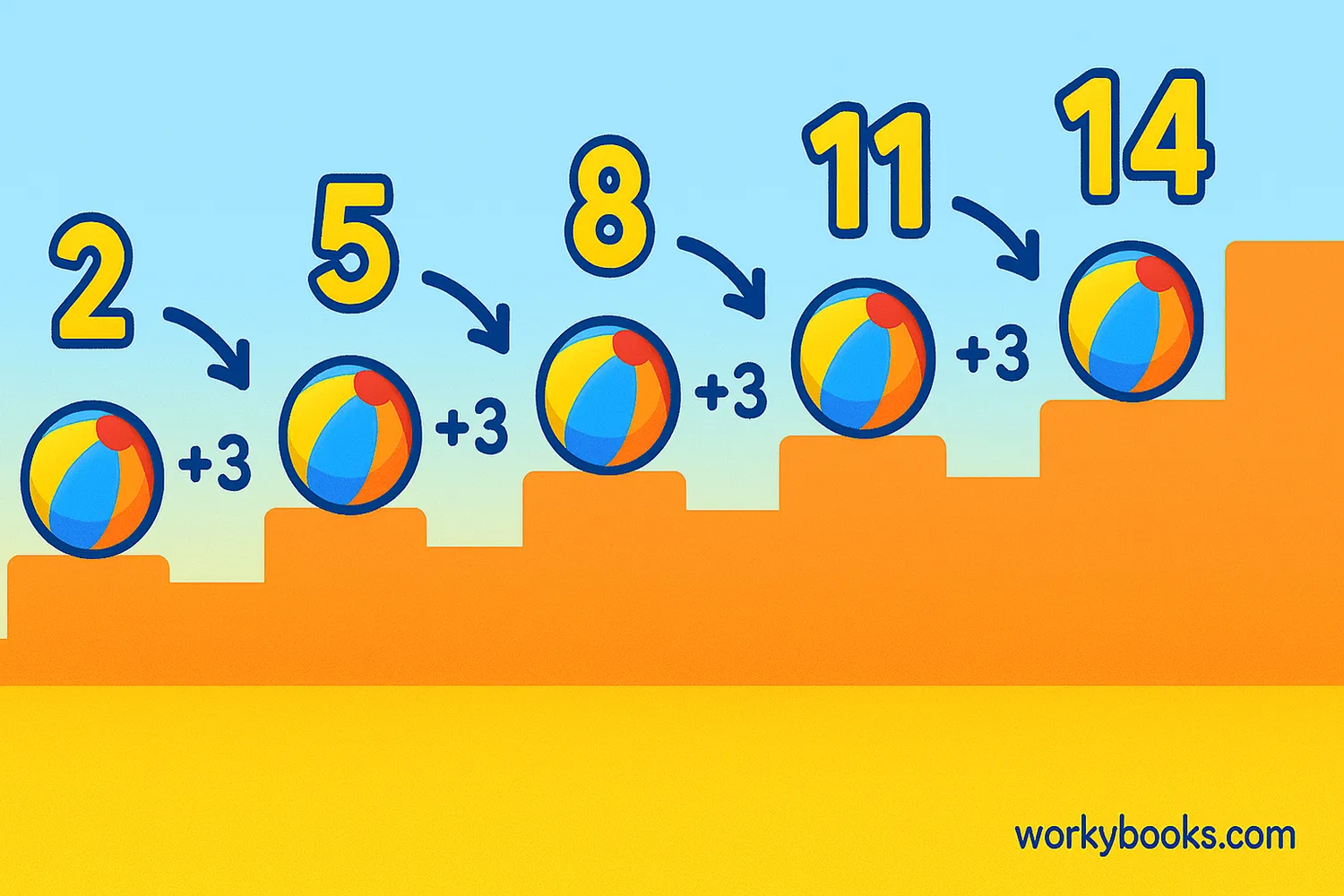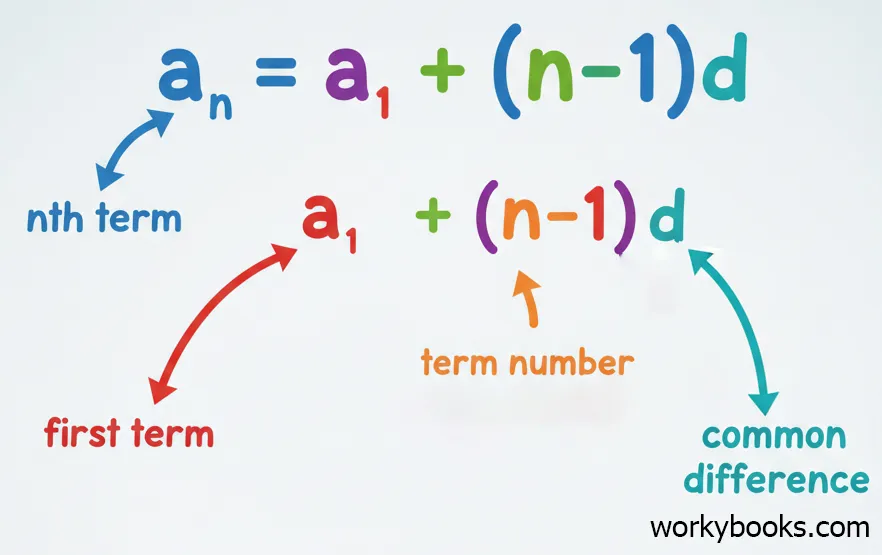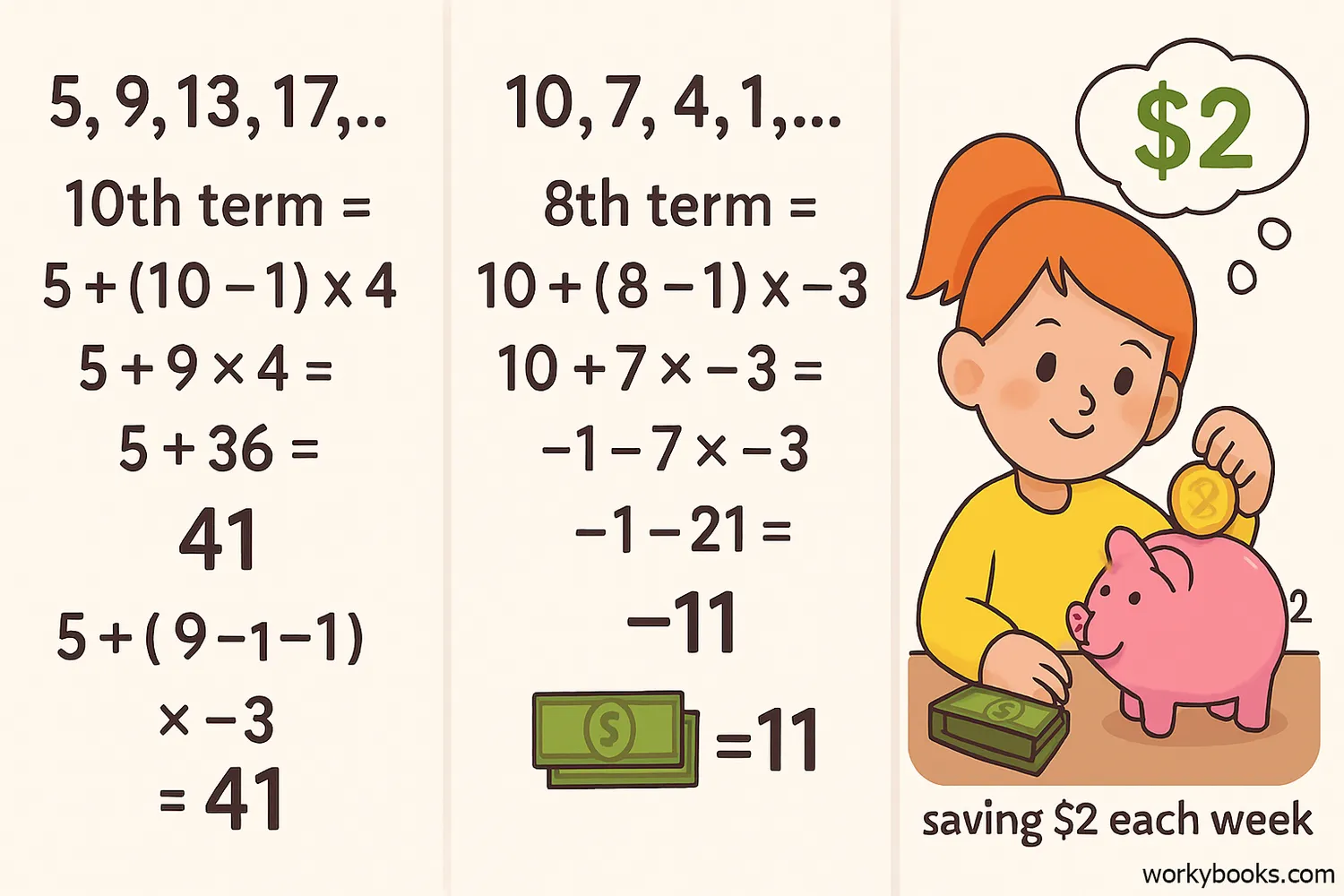Nth Term of AP - Definition, Examples, Quiz, FAQ, Trivia
Understanding Number Sequences and Patterns for Young Learners
What is Arithmetic Progression?

An arithmetic progression (AP) is a special sequence of numbers where the difference between any two consecutive numbers is always the same. This difference is called the common difference.
Think of it like climbing stairs where each step is the same height. Whether you're going from the first to the second step or from the tenth to the eleventh step, you're always moving up by the same amount!
Math Fact!
Arithmetic progressions are all around us! The numbers on a ruler, the pages in a book, and even the years on a calendar form arithmetic progressions.
Understanding the Nth Term Formula

The nth term of an arithmetic progression is a formula that helps us find any term in the sequence without having to list all the previous terms. The formula is:
Where:
• aₙ is the nth term we want to find
• a₁ is the first term in the sequence
• n is the position of the term (like 1st, 2nd, 10th)
• d is the common difference between terms
Identify First Term
Find the first number in the sequence (a₁)
Find Common Difference
Calculate the difference between any two consecutive terms (d)
Determine Position
Identify which term you want to find (n)
Apply Formula
Plug the values into the formula aₙ = a₁ + (n-1)d
Examples of Finding the Nth Term

Let's look at some examples of how we use the nth term formula:
Example 1: Simple Sequence
Find the 10th term of the sequence: 3, 7, 11, 15, 19, ...
First term (a₁) = 3
Common difference (d) = 4
Using the formula: a₁₀ = 3 + (10 - 1) × 4 = 3 + 36 = 39
Example 2: Decreasing Sequence
Find the 8th term of the sequence: 20, 17, 14, 11, ...
First term (a₁) = 20
Common difference (d) = -3
Using the formula: a₈ = 20 + (8 - 1) × (-3) = 20 - 21 = -1
Example 3: Real World Application
Sarah saves $5 each week. If she started with $10, how much will she have after 15 weeks?
First term (a₁) = 10
Common difference (d) = 5
Using the formula: a₁₅ = 10 + (15 - 1) × 5 = 10 + 70 = $80
Did You Know?
The concept of arithmetic progression dates back to ancient times. The Rhind Mathematical Papyrus from ancient Egypt (around 1650 BCE) contains problems that involve arithmetic progressions!
Nth Term of AP Quiz
Test your knowledge with this quiz! Answer all 5 questions to see how much you've learned about the nth term of arithmetic progression.
Frequently Asked Questions
Here are answers to some common questions about the nth term of arithmetic progression:
Math Facts About Arithmetic Progression
Discover some fascinating facts about arithmetic progression and number sequences!
Ancient Knowledge
Arithmetic progressions were studied by ancient mathematicians in Egypt, Babylon, and India over 4000 years ago! The Rhind Mathematical Papyrus from ancient Egypt contains problems involving arithmetic progressions.
Special Property
In any arithmetic progression, the average of all terms is equal to the average of the first and last terms. This makes calculating the sum of a long sequence much easier!
Real World Use
Arithmetic progression is used in finance to calculate simple interest, where the interest amount remains constant each period. It's also used in physics to model motion with constant acceleration.
Building Block
Understanding arithmetic progression helps build important math skills like pattern recognition, algebraic thinking, and problem-solving that are used in more advanced mathematics.





